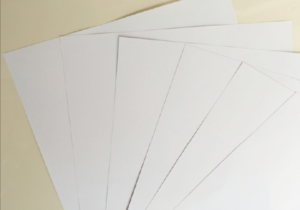
Paper Packaging Materials: A Detailed Guide
Having the best product on the market is never enough. Making your products with the best ingredient isn’t all either. What makes it complete is having a befitting package to improve the presentation of the products. Your customers will need to remember what it feels like to take your products out of the custom package. Apple utilized this desire and curated a sleek package for their devices which complement the experience of getting a brand new phone. That feeling is divine! We all love it!
Not to beat around the bush, the importance of packaging cannot be overemphasized. It is evident that paying attention to packaging is vital and plays a massive role in the value of products. But that’s not all! An ideal package could also promote sales while providing the necessary protection for its product.
Meanwhile, the packaging industry is fast evolving. New trends are being introduced to this, all aligned towards creating better options. There is a wide range of types of packaging materials available for usage today, including wood, metals, plastics, and paper. However, paper remains one of the most lucrative materials, making it one of the most used in recent times.
There are different types of paper materials available. Each displays unique properties and is identified explicitly for particular purposes. This post will look at the various paper packaging materials while discussing their properties and usage. We’ll also have an FAQ section where you can find some answers to ravaging questions about paper packaging materials. Let’s jump straight into it!
Paper packaging Materials: A Review of the Types.
When you think of product packaging, you’ll almost immediately think of the boxes and cartons in which your orders get delivered. Well, you’re not entirely wrong. But there’s more to paper packaging than that.
There are many types of paper packaging, and they include;
- Paperboard boxes
- Corrugated boxes
- Rigid boxes
- Cardboard boxes
- Kraft paper
- Parchment paper
- Paper bags and sacks, and many more!
However, of all these materials, the most common ones are cardboard, corrugated, rigid, Kraft, and paperboards packaging. Let us take a look at each of them;
What is cardboard paper?
 Cardboard is one of the most common types used in packaging and shipping. You’ll most likely find them more often than the other paper packagings. Cardboards are paper-based materials but are much thicker than regular paper. It is used to make folding cartons used to pack and ship goods. They are versatile and can use in many industries, including the food industry.
Cardboard is one of the most common types used in packaging and shipping. You’ll most likely find them more often than the other paper packagings. Cardboards are paper-based materials but are much thicker than regular paper. It is used to make folding cartons used to pack and ship goods. They are versatile and can use in many industries, including the food industry.
Cardboard boxes are considered the best options because they are more rigid and stronger. It also has more weight than the regular boxes. Cardboard is made of many layers (corrugated materials), including layers of paper and wavy paper placed in the center. However, this structure can be flattened and only noticed upon close inspection.
What is Corrugated Paper?
 Corrugated paper (often referred to as brown cardboard) is a type of paper packaging material made from a particular variant of heavy paper called CCM (Corrugated Case Material) or containerboard.
Corrugated paper (often referred to as brown cardboard) is a type of paper packaging material made from a particular variant of heavy paper called CCM (Corrugated Case Material) or containerboard.
This type of paper is made up of three layers placed each on top of another. This composite adds to the overall strength, durability, and structure of the material. The layers are a top and bottom layer (liners) and a corrugated ripple center. The wavy center is where the strength and resistance of the material lies.
Corrugated paper comes in different thicknesses, and it is very durable. It can be used for shipping and hence nicknamed ‘shipper’s box.’ It can be used for shipping food items and as a case package for electronics and appliances. Regardless of its strength, it still has the feature of being lightweight and easy to handle.
The pros of corrugated paper/boxes include;
- It can be easily custom printed for branding purposes
- Relatively good strength
- Durable and versatile
- Useful in shipping bulk products
- Easily recyclable
- Easily customizable into different shapes and designs
- Affordable
- Lightweight
The cons of corrugated boxes include;
- It has a less desirable appearance when beauty is prioritized
- Not an ideal option for long-term purposes.
What is Paperboard?
 Paperboards are thinner and lighter than corrugated paper and cardboards. They are often compared to generic paper. Although the difference is not so distinct, paperboards are generally thicker (usually about 0.30mm thicker) than regular paper.
Paperboards are thinner and lighter than corrugated paper and cardboards. They are often compared to generic paper. Although the difference is not so distinct, paperboards are generally thicker (usually about 0.30mm thicker) than regular paper.
Although it is thicker than the average paper, it is composed of just one layer. It doesn’t have the wavy center as in corrugated paper and cardboards. This means it won’t present the same strength as it would. It would probably be on top of the paper food packaging materials list. They will carry a single item like cereals, snacks, or toys.
Some reasons why we use paperboard in packaging are;
- Very flexible and easy to fold
- Easy to customize
- Recyclable and sustainable
- The least expensive paper materials
- Suitable for food packaging
- Space efficient as it is easily collapsible
The disadvantages include;
- Poor strength
- Poor water resistance
- It cannot be used for shipping
- It is not versatile in packaging solutions
